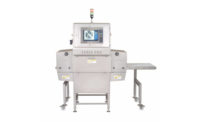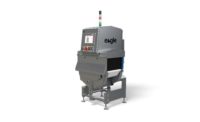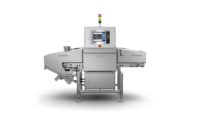In high-risk environments like meat and poultry facilities, tools that identify and reduce risks for both the product and the process are pivotal in the effort to provide safe, high quality finished products. X-ray inspection, a longtime and common method for detecting contaminants, is increasingly used as a quality control tool for risk mitigation.
“Best practices for quality control are not just in place for product attributes like taste and consistency. Those attributes are still a priority, but today’s quality programs are designed to help processors run their operations in a safer, more efficient way, something that advanced inspection systems can help accomplish,” says Steve Dowd, Regional Sales Manager for Eagle Product Inspection.
Advanced x-ray systems from Eagle Product Inspection find and remove contaminants and can simultaneously identify product issues ranging from missing items to measuring mass. As tools that perform both quality and safety checks, advanced inspection systems can be incorporated into best practices that are part of a comprehensive quality control program.
For example, when conducting a risk assessment and creating a risk mitigation plan as part of quality control measures, processors can identify vulnerable points at which inspection equipment can identify foreign bodies and perform important quality checks. X-ray machines can be deployed in several processing stages, from the arrival of raw material to inline processing to a final check of packaged meat and poultry products.
In addition to risk assessments and mitigation plans, other best practices for quality control include the formalization of quality standards, the definition of quality metrics and the use of statistical process control monitoring to assess progress. Here, too, advanced inspection systems can be used to conduct safety and quality checks and measure adherence to defined standards and metrics, via information that is collected and stored. Eagle regularly updates its proprietary software for such data gathering and storage, including its SimulTask PRO and TraceServer.
Eagle Product Inspection offers a variety of inspection systems that can reduce risks and be part of an effective quality control program. Continual refinements in Eagle’s Fat Analysis (FA) technologies have enhanced detection capability and improved quality through better recipe management. Eagle has also improved its technologies to include barcode readers that can switch between 1,500 different product codes, allowing users to determine the presence of contaminants or quality information like lean points or mass. “We know that such versatility and efficiency are essential for processors, who are working to hit quality goals without sacrificing speed,” says Dowd.
As the global market for meat and poultry remains uncertain for 2020 and as processors face issues ranging from labor shortages to demand for higher speeds and throughputs, the versatility of machinery will be increasingly pivotal. “We encourage processors to look at x-ray systems in a new and more holistic way, to maximize the potential of the machines. That itself is a good practice for better quality control,” Dowd says.
To learn more about Eagle’s latest inspection systems, visit www.eaglepi.com.




Report Abusive Comment